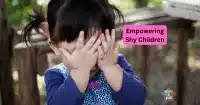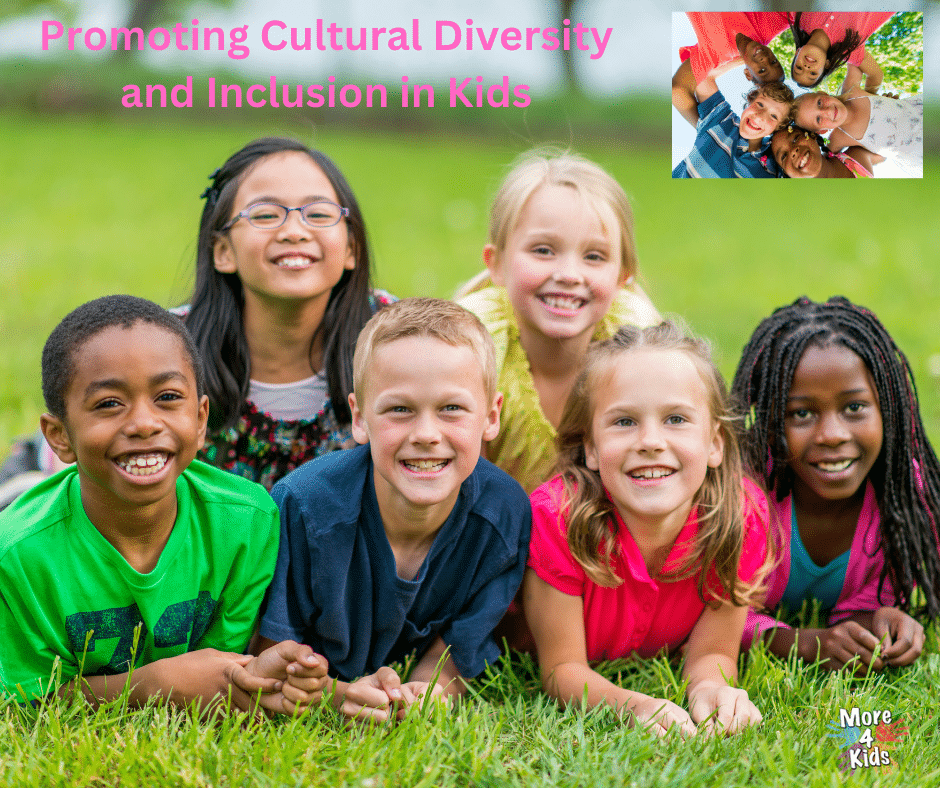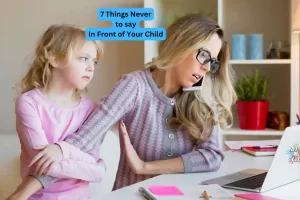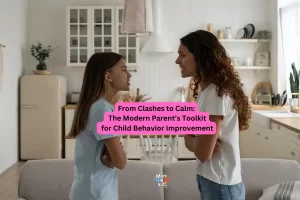The world is filled with approximately 3,800 cultures. Yes, that’s right. Three thousand, eight hundred. With almost four-thousand cultures out there, the odds are strong that many of them will be different than yours and the ones you’re teaching your children about. With only 24 hours in a day, though sometimes it feels like 240, it is truly impossible to teach your children about every single culture and people out there. There are some things, however, that that can help teach kids cultural awareness and inclusion, and remaining consistent through education and child-rearing itself makes it a bit easier.
1. Teaching kindness starts at home
Table of Contents
Nurturing cultural awareness and inclusion starts at home. This is something vital to remember when it comes to anything regarding our children. If we don’t show them how to behave kindly, then it is impossible to expect them to do it to others. For them to learn how to accept others without judgement for what they do not know, then we need to do the same. This can start by simply not “yucking someone else’s yum,” like I like to tell kids. If mom likes a different food than the child, the child shouldn’t make a big deal and act as though they are completely grossed out by it. Tolerance, inclusion, and respect start at home. Treat people the way they want to be treated is one of the most often repeated phrases many have heard, however it is true through and through. This starts in the first environment children are exposed to- at home.
2. Variety of Media helps promote cultural awareness
While books, tv shows and movies are still catching up when it comes to representation, this is often the best place to start. Do all of the characters in the books you read to your children look like you and share your culture? Do all of the characters in movies and television? If so and you’re looking to teach your children about other people’s cultures, then it is a great place to start to look for books from people who are different from you. Some of my favorites include, Hair Love, Eyes that Kiss in the Corners, Ada Twist, Scientist, The Gift of Ramadan, The Very Hungry Caterpillar’s Eight Nights of Hanukkah, and My Food, Your Food, Our Food.
Books are typically the first form of media our children consume, however if your child is at the age where they are watching television and movies, there are some great choices out there. Sesame Street does an excellent job of introducing other cultures, as does Molly of Denali, Mira the Royal Detective, and geared for older children, The Casagrandes. Disney has been filling a hole of their own making by releasing Encanto, Raya and the Last Dragon, and Coco. PBS is one of the best channels for this, with many main characters coming from different backgrounds and cultures.
3. Exposure at festivals

4. Celebrating the culture based on different holidays
There are so many holidays that exist outside of our federally given observed holidays. Christmas and Halloween and Easter are all important, however so are Ramadan and Eid-al-fitr, as well as Hanukkah and Rosh Hashanah. These holidays present the perfect opportunity to teach your children about other cultures and promoting cultural awareness. They are an excellent steppingstone that opens the doors to learn even more after this point. Check out books from the library about a holiday that you don’t celebrate. Make crafts to talk about the different parts of the holiday, such as drawing a dreidel and talking about the Hebrew letters on each side. Pinterest is a fantastic resource to find more ideas for when your creative well is tapped out or you need to learn more yourself.
5. Cook food from other countries
Developing cultural awareness can start in the Kitchen! Ben Wilson, author of First Bite, says, “It is possible to educate children in the pleasures of food; and that doing so will set the children up for a lifetime of healthy eating. Feeding is learning.” I so agree, Ben. Obviously everyone knows of the importance of food, however few realize the importance goes beyond nourishing our bodies. The dinner table is a great place to teach cultural awareness. Children hear more vocabulary at the dinner table than at any other point through the day. It is and has, for centuries, been a place where we congregate, share, encourage, laugh and love. Set up with the right environment and history, the table can be a place where magic happens. This is what makes it a great place to introduce new foods from other countries and cultures.
I’m not saying that you must immediately start cooking dishes that completely out of your comfort zone, or the comfort zones of your children. What I am saying, however is that it is entirely possible to add new dishes to your weekly menu while not breaking the bank. If your kids are sick of seeing green peas, use edamame and talk about where the vegetable was originally grown. When you go out to eat, instead of going to your usual place, go somewhere that serves a different type of cuisine. These are simple ways to both expand your child’s palate and introduce them do new and exciting cultures.
6. Travel as much as possible to promote cultural awareness
This one requires a bit more money than the others, however this will go the farthest in helping your children to appreciate other cultures. For many families, my own included, it is not possible to take a grand, international trip. Airplane tickets are expensive for one person, let alone four or five and then you consider lodging, travel around the country you’re visiting, the cost of food and experiences, and ensuring you and your children have a passport? The total racks up quickly.
That’s okay. I’m not here saying that you must suffer in order to provide your children with these types of opportunities. If you can’t do it, don’t worry, there are other options. Do you live within driving distance of a major city? Metropolitan areas are a beautiful melting pot of diversity, and it is far easier to see the beauty of different cultures in these cities than it might be in a small town in the Midwest. Take your family for a weekend trip to a city larger than yours. Explore your area, help them to get to know the world around them before they strike out for an even bigger area. One of my first international trips was a six hour drive to Canada- it was incredible and extremely accessible. One would still need a passport for this trip, however it is far easier to get somewhere in North America than it is to take a flight to another continent.
7. Nurture cultural diversity in kids through toys
Toys are an inevitable part of childhood. As much as we might hate the clutter, play has a vital role in our children’s development, and toys have come a long way from the days of light up glo-worms and wind up baby dolls.
There are some great toy subscription boxes out there, and some that deal specifically in teaching your children about other cultures. These include the Kiwico Atlas Crate and the Little Passports Box.
The Kiwico Atlas Crate is meant for children ranging from ages 6-11. It is $23.95 and, according to their website, it “helps your child develop an appreciateion for other world cultures.” Sounds great, right? “Through immersive, hands on-STEAM (science, technology, engineering, art, mathematics) activities, we hope to connect kids creatively and intellectually with communities and customs beyond their own experience.”
The activities are always colorful and fun, and education is truly the number one focus of the box.
The Little Passports box is inclusive of children as young as three and up to ages 9+. Most of their boxes start at $24.95 and they have a tremendous amount of options, including Kitchen Adventures, Early Explorers, and the World Edition.
If you are looking for something simple that provides your children with hours of entertainment, or a great birthday gift for another child in your life, look no further than these.
8. Listen to music from other cultures and in other languages!
Music is a fun way to help foster cultural awareness, it is also incredible for the development of our children. Singing and musical instruments can stimulate parts of the brain in ways that nothing else can. So often we play the same music repeatedly and it makes sense- it is familiar and comforting. When we play something in another language, however, with a different style of instrument, we are introducing our children to something new, and something they may fall in love with on their own terms.
9. Help your children to understand there are traditions within their families and their own cultures that are worth celebrating.
I am Scottish through and through. My great grandparents immigrated to the United States from Scotland and though I did not know of any Celtic and Scottish traditions growing up, I have tried to make up for lost time by learning as much as I can. Even if your family has been in your country for generations and your culture and ethnicity are all you see in your town, there are things that your child can appreciate about their heritage.
Are there things that are unique to your family? Do you have fun holiday traditions, like hiding a silly ornament on the Christmas tree, or on the first day of Summer having an ice cream sundae? Not only are these a fantastic way to introduce the concept of differences in families and then expanding to cultures, but it is a way to help your child to take pride in what makes them and their family special.
10. Remember that it isn’t about doing this once, but doing it frequently!
Your day is filled with so much that sometimes it is impossible to get done the minimum amount of stuff that you need to get done. It is okay if you can’t fit this in as frequently as you want to. Take opportunities all around you as a teaching moment. See how the CEO of More4kids helped teach his cultural awareness when a rainbow popped up during a walk with his son: The child and the rainbow. If you have a heart that is open to conversation and willing to discuss this with your children often, that is the most important thing. If you see a flag of another country while you’re out running errands, talk about it. If you hear someone speaking another language, talk with your children about it. Like most things in life, our children take their cues from us. If we’re open, honest, and willing to talk, they will be too.
If I can leave you with one other word of advice, don’t shy away from talking about cultural awareness and inclusion with your kids because you’re worried that you will make a mistake. No one is perfect, no one has all of the information or knows the best way to talk about it. It is impossible to use the right words all the time. If you are willing to course correct and clear up any misconception or misinformation, everything will be okay.
Raising Cultural Awareness FAQ
How can I teach my child about cultural awareness and inclusion at home?
Start by modeling kindness, respect, and tolerance at home. Encourage conversations about different cultures and lead by example.
What media resources can help my child learn about diverse cultures?
Choose books, TV shows, and movies that represent diverse characters and cultures. PBS, Disney, and Sesame Street are great sources.
How can attending cultural festivals enhance my child’s understanding of different cultures?
Festivals expose your child to new customs, food, music, and traditions, fostering appreciation and understanding of different cultures.
How can celebrating different holidays help teach my child about cultural awareness and inclusion?
Introduce your child to holidays from various cultures through books, crafts, and activities, sparking curiosity and promoting cultural apprecia
What are some ways to incorporate learning about other cultures through food, toys, and music?
Try cooking international dishes, subscribe to cultural toy boxes, and listen to music from other countries to enrich your child’s cultural knowledge.
What does cultural awareness mean?
Cultural awareness refers to understanding and appreciating the differences and similarities among various cultures, including customs, values, traditions, and beliefs. It involves being open-minded, respectful, and empathetic towards other people’s cultural backgrounds, fostering better communication and cooperation among individuals from diverse backgrounds.













Add Comment